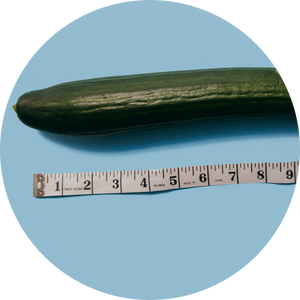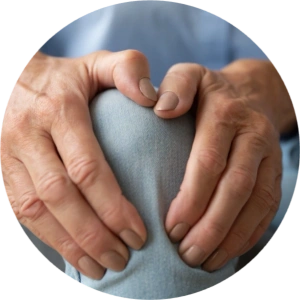One of the most common causes of chronic pain is joint pain. Dealing with joint pain can be particularly challenging, since your joints are essential for everyday mobility and tasks. If your joints are causing you pain, it can have a negative impact on your overall quality of life.
Keep reading to learn more about joint pain, including its common causes, treatments, and ways to prevent it.
What are Common Causes of Joint Pain?
There are hundreds of joints within the human body. Each has numerous components that allow bones to slide past one another with ease and provide full range of motion. Joint pain often occurs when one or more parts of your joints cannot function properly, leading to friction and inflammation.
Below is a closer look at some possible causes of joint pain.
Osteoarthritis
Osteoarthritis is a condition characterized by inflammation in the joints, primarily caused by joint overuse.
Joints are areas where two bones meet. At the end of these bones, there is cartilage – a type of tissue that helps reduce friction as the bones slide past one another. However, this cartilage has its limits. If you misuse or place too much strain across your joint, it can prematurely wear down the cartilage. Once the cartilage layer has worn away, bones begin to rub together, which can cause pain and inflammation.
Osteoarthritis often occurs in the knees, hips, lower back, and hands. These joints tend to be utilized more extensively than others. In the case of the hips and knees, these joints are constantly bearing the weight of your body. High-impact activity can accelerate cartilage wear and tear.
Rheumatoid arthritis
Rheumatoid arthritis is another form of joint inflammation that can cause pain.
Unlike osteoarthritis, rheumatoid arthritis is not caused by excessive wear but rather a malfunctioning immune system. The immune system mistakes your own tissue for a foreign invader, and tries to destroy it.
With rheumatoid arthritis, the immune system begins targeting the lining of joints, leading to inflammation and pain across the joints. Rheumatoid arthritis tends to affect the fingers, hands, wrists, ankles, feet, elbows, knees, and shoulders. If left untreated, it can cause irreversible joint damage and chronic pain.
Ligament injury
In addition to bones and cartilage, your joints are also home to tissues known as ligaments. Ligaments are connective tissues that anchor bones together and help dictate how joints can move.
When ligaments are strained or torn, it can be very painful. Knees – which have four main ligaments – are especially prone to injury. ACL sprains and tears are particularly common in sports that require sudden changes in direction.
Bursitis
The bursa is another important joint component. This fluid-filled sac provides lubrication and cushioning to the joint. Bursitis is a condition where the bursa becomes inflamed, causing joint pain, stiffness, and discomfort. Inflammation of the bursa can be caused by various factors, including infection, injury, and overuse.
How is Joint Pain Treated?
Joint pain can be difficult to treat as it tends to cause long-term chronic pain. Some prescription pain relievers can cause unintended side effects that can get worse if they are taken for extended periods of time. Below is a closer look at some ways that joint pain is treated.
Treating underlying causes
When treating joint pain, it’s important to get to the bottom of why your joints are hurting in the first place. This approach is particularly valuable for autoimmune conditions such as rheumatoid arthritis. While there is no cure for RA, several treatments can help lessen its effects.
If you have RA, consulting a rheumatologist or other health care expert can help you find the best treatment plan for you.
Injections
Joint injections can effectively manage joint pain caused by chronic disease. Joint injections typically contain an anesthetic agent in addition to corticosteroids. These injections can provide immediate pain relief and help to reduce inflammation in a joint. This treatment option is common for those who have arthritis that doesn’t find over-the-counter medications helpful.
Over-the-counter pain relief
A tried and true method of achieving pain relief is using over-the-counter pain relievers. Nonsteroidal Anti-inflammatory Drugs (NSAIDs) are an effective first line option for pain management, as they don’t require a prescription and tend to be well tolerated by most people. Some popular examples of NSAIDs include ibuprofen and aspirin.
Joint replacement
Joint replacement is often considered the last resort when it comes to relieving joint pain. In this procedure, a surgeon removes the remaining joint and replaces it with an artificial joint made from body-safe metal. While the procedure may cause some discomfort during recovery, it will reduce pain in the long run.
Topical prescription pain relief
Some people will try to avoid prescription pain relievers to prevent developing a dependency. Fortunately, there are prescription options that are non-addictive and provide targeted joint pain relief. Protaren is a prescription medication specially formulated to help with disruptive knee pain. As a topical analgesic, Protaren can provide targeted and effective pain relief – making it an effective option for joint pain.
How Rex MD Can Help
Joint pain is a common issue with many potential causes ranging from a joint injury to an autoimmune disorder. Have a conversation with a physician to determine the best route for you. Rex MD is here to help.












